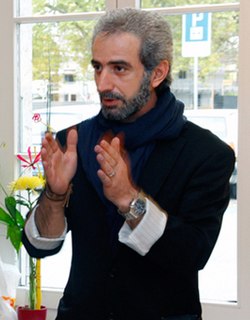 W
WSultan Ali Mashhadi (1453-1520) was a Persian calligrapher and poet.
 W
WAlireza Abbassi Tabrizi was a prominent Iranian calligrapher and calligraphy teacher. He was titled by Abbas I as Šāhnavāz Xān. Abbassi was a master of Naskh and Thuluth scripts and the initiator of his own style of Nastaʿlīq script. Besides he was an expert of various other scripts like Muhaqqaq, Reqa, Reyhan, Tevki and Taʿlīq scripts.
 W
WMaulana Azhar was a Persian calligrapher.
 W
WBaba Shah Isfahani, also known as Baba Shah Araghi, was the most famous Iranian calligrapher in the 16th century and the most prominent calligrapher of Nastaliq script in the era of Tahmasp I. He was titled as Reyis or-Roassa. His calligraphy teacher was Ahmad Mashhadi. In 1588, when he was young, he ravelled to Iraq. He was killed in Baghdad and was buried in this city. His works date back from 1569 until 1586.
 W
WAbolhassan Etessami, Iranian architect, calligrapher, painter, and novelist, was born in 1903 and died in 1978. His father Ebrahim Etessami was the head of finance of the Iranian province of Azerbaijan; and his brother Yussef Etessami was the founder of the Bahar journal, and the father of the poet Parvin Etessami.
 W
WKorosh Ghazimorad is a Persian graphic designer, calligrapher and artist.
 W
WMir Emad is perhaps the most celebrated Persian calligrapher. He was born in Qazvin, Iran. It is believed that the Nastaʿlīq style reached its highest elegance in Mir Emad's works. These are amongst the finest specimens of Nastaʿlīq calligraphy and are kept in several museums in the world.
 W
WMir Ali Heravi, also known as Mir Ali Hossein Heravi and Mir Jan, titled as Kateb-e Soltani, was a prominent Persian calligrapher and calligraphy teacher of Nastaʿlīq script in the 16th century. He was the second significant Persian calligrapher after Mir Emad. He had artistic influence on the later calligraphers.
 W
WKeikhosro Khoroush is an Iranian painter and calligrapher. He graduated at the first rank in the College of Art, University of Tehran. He has been one of the most realistic Iranian painters and one of the great masters in Persian calligraphy since 1980. He was awarded the title of the everlasting people in 2005.
 W
WMírzá Ḥusayn-i-Isfahání was a prominent Baháʼí and one of the nineteen Apostles of Baháʼu'lláh, as well as a famous calligrapher of 19th-century Persia. He is the author of a calligraphic rendering of the Greatest Name, used by Baháʼís around the world.
 W
WMohammad Paolo Zaman Kermani known as Mohammad Zaman, a famous Safavid calligrapher and painter.
 W
WMehdi Saeedi, is an Iranian-born artist and designer based in Philadelphia and he is a part-time faculty of graphic design at the Towson University in Maryland, United States. His aesthetics have become a mainstay of design in many regions, especially in those using the Arabic and Iranian scripts as their alphabet.
 W
WMuhammad Ibn Abdullah Taleb Amoli known as Talib Amuli and Talib Amoli Iranian Tabari poet was of the early 17th century. He was the poet laureate of the Mughal emperor Jahangir from 1629 till his death. His poetry is in the “Indian Style” of Persian language. A poetry collection (divan) and the poem Talib and Zohre are the works that are left of him today. The fact that he read mathematics, geometry and philosophy in his poems reveals that he received a good education. He is also known to be a good calligrapher.
 W
WTowhidi Tabari is an Iranian artist.
 W
WZeinolabedin Mahallati or Zayn al-Abidin ibn Muhammad ibn Ali al-Mahallati was an eminent Persian calligrapher who was active in the period around the 1870s. He lived in Mahallat, under the Qajari Persia. He produced several gold illuminated Korans and Tafsir books.